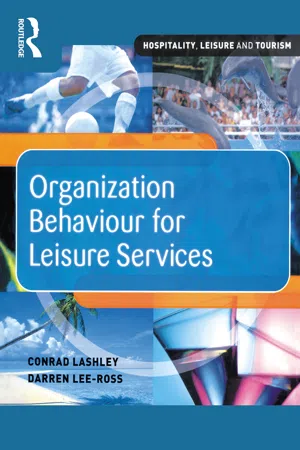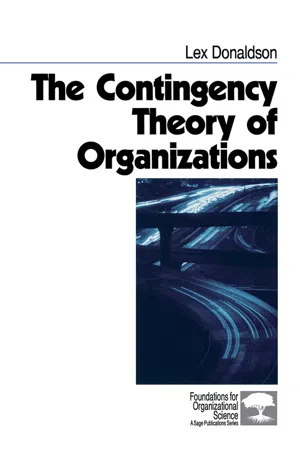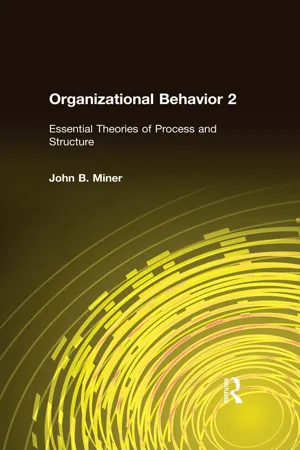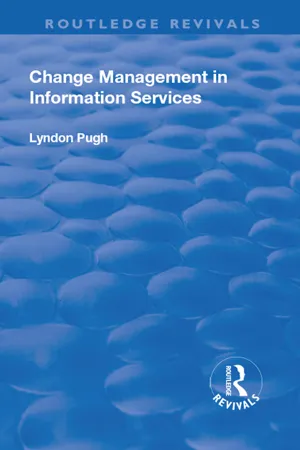Business
Mechanistic vs Organic Structure
Mechanistic structure in business refers to a highly hierarchical and centralized organizational design with clear lines of authority and control. On the other hand, organic structure is characterized by decentralized decision-making, flexibility, and adaptability. Mechanistic structures are suitable for stable environments, while organic structures are better suited for dynamic and uncertain business environments.
Written by Perlego with AI-assistance
Related key terms
6 Key excerpts on "Mechanistic vs Organic Structure"
- eBook - ePub
- Darren Lee-Ross, Conrad Lashley(Authors)
- 2012(Publication Date)
- Routledge(Publisher)
Table 2.1 .Table 2.1 A comparison of mechanistic and organic structuresBoth of these organizational types are, more or less, a firm’s design response to contingencies. For example, mechanistic structures are appropriate in ‘placid’ conditions where there are only minor and, usually, slow environmental changes. Organic designs work best where these conditions are dynamic and there is a need for continual flexibility to cope with fluctuating changes.Robbins (2001) holds a similar view and suggests that organizational structures are best suited to the following strategies:- organic – innovation: loose structure with low specialization, low formalization, and decentralization
- mechanistic – cost minimization: tight control with extensive work specialization, high formalization and high centralization
- mechanistic and organic – imitation: mix of loose with tight properties including tight control over current activities and looser control for new undertakings.
Another view alerts us to the idea that organizations undergo a natural process of development and increased sophistication by virtue of their own success. Greiner (1972) first conceptualized this organizational ‘evolution’, and the major phases are summarized as:- entrepreneurial – leadership which brings the organization through its first crisis and provides goals and direction
- collectivity – autonomy
- delegation – control
- formalization – red tape
- collaboration – renewal which leads to either a new form of organization or into decline (adapted from Hatch, 1997: 174–7).
Implicit in the above is the notion that each stage is dominated by a different focus fraught with crises. Once these crises are addressed, the organization passes into the next developmental stage. However, Greiner’s model is introspective and is more concerned with leadership than environmental dynamics. In addition, it does not deal with major contingencies identified by many other theorists. The following subsection introduces some of these contingencies and explains their meaning in a leisure services context. - eBook - ePub
- Lex Donaldson(Author)
- 2001(Publication Date)
- SAGE Publications, Inc(Publisher)
The most fundamental contribution to organic theory was provided by Burns and Stalker (1961), who offered an elegant theory that has proved to be compelling for many subsequent scholars. They distinguish between two organizational structures, the mechanistic and the organic (Burns and Stalker 1961, pp. 119-122). The mechanistic structure emphasizes hierarchy, with the task of the organization being divided into specialized roles whose occupants remain dependent upon their superordinates, who retain much of the knowledge and information. The image of a mechanistic organization structure is of a hierarchy with centralized decision making that tightly prescribes lower-level roles. In contrast, in the organic structure, understanding of the task is widely shared among employees who use their initiative, accept joint responsibility, and work flexibly. The image of an organic organization is a network in which experts collaborate in fluid and ad hoc ways. Burns and Stalker (1961, pp. 119-122) identify several other distinguishing characteristics of the organic structure, such as commitment to the “technological ethos” (p. 121), but these wider features were not often used by subsequent scholars, so that the mechanistic versus organic distinction has come to refer to structural characteristics internal to the organization.Burns and Stalker (1961) make the contingency argument that mechanistic structures are effective only in conditions of low rates of technological and market change, whereas high rates of such change require the organic structure for the organization to be effective. With low rates of change, the top managers possess adequate knowledge to specify the work roles of their subordinates. In contrast, with high rates of change, the top managers lack much of the knowledge and so must rely on the expertise of their subordinates, who can organize the work among themselves. The mechanistic organization is not only a structure but also a culture, in which subordinates are psychologically dependent upon their superordinates (Burns and Stalker 1961). The mechanistic structure corresponds to the structure prescribed by the classical management school, with its emphasis on centralized control, job specialization, and clear job descriptions (Brech 1957; Taylor 1947). In contrast, an organic structure encourages and legitimates the exercise of discretion by employees. The organic structure corresponds to the structure prescribed by the neo-human relations school, with its emphasis on employee empowerment, self-directed teams, and participation in decision making (Argyris 1964; Likert 1961). Instead of the universal claims to a “one best way,” Burns and Stalker argued that each model was valid in its own place. Its place was given by the contingency factor of technological and market change. Accommodating the two rival, preceding theoretical schools of classical management and neo-human relations into a broader framework was an attractive feature of the contingency theory of Burns and Stalker. - eBook - ePub
The Psychology of Behaviour at Work
The Individual in the Organization
- Adrian Furnham(Author)
- 2012(Publication Date)
- Psychology Press(Publisher)
• Activities are specialized into clearly defined jobs and tasks. A manufacturing organization with a single assembly line is typically a mechanistic structure.• Persons of higher rank typically (should) have greater knowledge of the problems facing the organization than those at lower levels. All problems are thus passed up the hierarchy until they reach a person with both the knowledge and skill to deal with it.• Standardized policies, procedures and rules guide much of the decision-making in the organization. Mechanistic organizations often have detailed manuals of organizational policies. Rules are followed rigidly, and the punishment for breaking them is often harsh.• Rewards are chiefly obtained through obedience to the directions of supervisors. Mechanistic organizations encourage conformity and discourage innovation, since innovation often means not obeying company regulations.Organic organizations, on the other hand, have flexible organizational designs and can adjust rapidly to change (Gordon et al., 1990: 258–259):• There is less emphasis on job descriptions and specialization. People become involved in problem-solving when they have the knowledge or skill that will help solve the problem. It is skill, ability and knowledge rather than rank which dictates participation in problem-solving.• People holding higher positions are not necessarily assumed to be better informed than employees at lower levels. Such organizations emphasize decentralization of decision-making, where responsibility and accountability are pushed as low in the organization as is feasible.• Status and rank differences are de-emphasized. Individuals are ideally valued for their expertise rather than for their position in the hierarchy.• Horizontal and lateral organization relationships are given as much or more attention than vertical relationships. Project teams, matrix structures, integrating or liaison roles, and task forces, which bring together individuals with diverse functional expertise, are frequently introduced. - eBook - ePub
Organizational Behavior 2
Essential Theories of Process and Structure
- John B. Miner(Author)
- 2015(Publication Date)
- Routledge(Publisher)
and dependent upon the concerns and the point of view of the observer. (Turner 1995, 283)What research has been conducted on mechanistic and organic systems concepts in the past couple of decades has dealt with the theory in a piecemeal fashion. Thus, a study by Russell and Russell (1992) has looked at the relation between innovation and organic structure—considered to be represented by decentralization, informality, and complexity of work. What it found, however, was that innovation (as represented by two separate measures) was related only to decentralization, not at all to informality or complexity. This suggests that the total organic system may not be required for innovation to occur, a result that is not what one would have expected from a reading of mechanistic and organic systems theory. In view of the fact that mechanistic systems are clearly capable of certain types of innovation on occasion (Daft 1982), the conceptual foundation of the organic type system as a distinct purveyor of innovation is brought into doubt.A second relevant piece of research looked at communication patterns in two plants of the same company, one said to be mechanistic and the other organic (Courtright, Fairhurst, and Rogers 1989). In this instance the mechanistic plant was without question operating with a bureaucratic, hierarchic structure. The organic plant utilized self-managed teams and participatory decision making extensively. The focus on communication patterns seems entirely appropriate given Burns’s prior interest in this matter and the attention given to it in the Burns and Stalker book. There organic communications are said to be horizontal or lateral, consultative, focused on information and advice, and to be rejecting of the exercise of authority over the individual.In the study competitiveness and evidence of manager dominance were less pronounced in the organic context, as were disagreements, conflict, order giving, and attempts at control. The interactions appear to have been more frequently consultative in the organic plant. Overall, these findings seem to have much in common with what Burns and Stalker (1994) describe. However, conflict over the exercise of authority seems to be less, rather than more, prevalent in the organic plant. There is just enough disagreement inherent in the findings from the two sources to suggest that the two were not defining organic in quite the same way. The fact that teams and group decision making, as well as participation, were not part of the Burns and Stalker description of organic systems reinforces this conclusion. Yet, in other studies, the mechanistic-organic distinction has been found to differentiate distinct relationships that exist with regard to factors such as perceived justice (Ambrose and Schminke 2003). The two systems do appear to represent meaningful structural entities. - eBook - ePub
- Lyndon Pugh(Author)
- 2018(Publication Date)
- Routledge(Publisher)
Once again there is no single, perfect answer. As suggested, even a bureaucracy can manage change successfully – in the short term and at the expense of long-term organisational health and capability. But any structure which is to be appropriate for the organisation of modern information services would be expected to demonstrate a number of characteristics. In general terms, organic structures are considered to be:Flatter.Made up of smaller, more autonomous units.Managed by subtle and less directive forms of influence.Based on strong horizontal as well as vertical communications.Distributed in terms of power centres and access to information.Cross-functional.Built on an information network.Demonstrably developing wide spans of control.Smaller in terms of the managerial core.By contrast, mechanistic structures demonstrate the already well-rehearsed characteristics of the classical management syndrome: narrow task specialisation, precisely defined responsibilities, clear and immutable procedures, strong hierarchies and formal power. The inflexibility in library organisations is caused by the presence of these characteristics and consequentially by elongated chains of command, the ring fencing of expertise and knowledge, impediments in the way of learning new skills and different behaviour, lack of information about what other parts of the library are doing and a failure to develop human potential.DEVELOPING ORGANIC STRUCTURESFlexibility can be injected into a library structure through matrix systems and through teams. It can come from the adoption of the principles and practice of learning organisations. Creating a network structure by setting up an information and communication system, together with the associated Knowledge Management theories, can form the spinal cord of the service and these ideas are reflected in the profusion of organisational shapes being tested in general management, and in some libraries. There are examples of Bull’s Eyes, Stars and Boundaryless Organisations. It is also quite feasible to envisage experiments with federal forms as divisions between services begin to dissolve. Some of Handy’s federalist principles (1989) could well be imported into information services where dissimilar autonomous units work within the orbit of a managerial centre responsible for creating common conditions under which all the units prosper. Other forms like Donuts and Cloverleaves reflect structural change of a different kind, which may well have a big impact on library services of the future but are not a major interest of this book. Most of these ideas share some common ground, and the information system or network comes as part of the package for everything. - eBook - ePub
Project Management
A Systems Approach to Planning, Scheduling, and Controlling
- Harold Kerzner(Author)
- 2013(Publication Date)
- Wiley(Publisher)
Behavioralists contend that there is no one best structure to meet the challenges of tomorrow’s organizations. The structure used, however, must be one that optimizes company performance by achieving a balance between the social and the technical requirements.Organizations can be defined as groups of people who must coordinate their activities in order to meet organizational objectives. The coordination function requires strong communications and a clear understanding of the relationships and interdependencies among people. Organizational structures are dictated by such factors as technology and its rate of change, complexity, resource availability, products and/or services, competition, and decision-making requirements. The reader must keep in mind that there is no such thing as a good or bad organizational structure; there are only appropriate or inappropriate ones.Even the simplest type of organizational change can induce major conflicts. The creation of a new position, the need for better planning, the lengthening or shortening of the span of control, the need for additional technology (knowledge), and centralization or decentralization can result in major changes in the sociotechnical subsystem.Organizational restructuring is a compromise between the traditional (classical) and the behavioral schools of thought; management must consider the needs of individuals as well as the needs of the company. Is the organization structured to manage people or to manage work?There is a wide variety of organizational forms for restructuring management. The exact method depends on the people in the organization, the company’s product lines, and management’s philosophy. A poorly restructured organization can sever communication channels that may have taken months or years to cultivate; cause a restructuring of the informal organization, thus creating new power, status, and political positions; and eliminate job satisfaction and motivational factors to such a degree that complete discontent results.
Learn about this page
Index pages curate the most relevant extracts from our library of academic textbooks. They’ve been created using an in-house natural language model (NLM), each adding context and meaning to key research topics.





